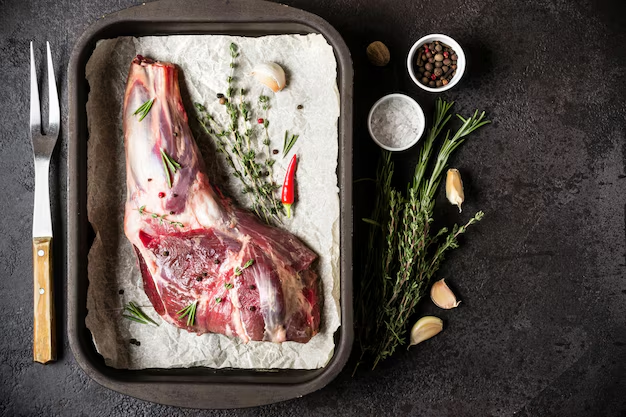How Long Does Cooked Prime Rib Last in the Refrigerator?
Prime rib is a centerpiece dish beloved for its tender, flavorful meat and its ability to make any meal feel like a special occasion. Whether it's for a holiday feast or a celebratory dinner, enjoying prime rib always feels luxurious. But what happens when the meal is over and you have leftovers that need refrigerating? How long is your cooked prime rib good in the refrigerator? Let’s dive into everything you need to know about storing cooked prime rib and keeping it as delicious as the day it was made.
The Golden Rule of Refrigeration
When it comes to cooked meats like prime rib, the most widely accepted guideline for refrigeration is keeping them for up to three to four days. This timeframe is based on optimal storage conditions and helps minimize the risks of spoilage and bacterial growth. It’s important to keep your refrigerator at or below 40°F (4°C) to help preserve the meat.
Why Timing Matters ❗
- Preventing Spoilage: As time passes, even refrigerated food begins to degrade in quality and flavor.
- Minimizing Bacterial Growth: Refrigeration slows but does not stop the growth of bacteria, which can lead to food poisoning.
- Enjoying Optimal Texture and Flavor: Freshly stored meat retains taste and tenderness better within the initial few days after cooking.
Best Practices for Storing Cooked Prime Rib
To maximize the shelf life of your prime rib, correct preparation and storage are key. Consider these best practices:
Let It Cool Naturally
Before storing prime rib, allow it to cool to room temperature to reduce the risk of condensation, which can lead to sogginess and undesirable textures. However, do not leave it out for more than two hours to avoid rapid bacterial growth.
Wrap It Right
Proper wrapping keeps the flavor intact and prevents the meat from drying out.
- Use High-Quality Plastic Wrap or Aluminum Foil: Ensure an airtight seal.
- Consider Reusable Airtight Containers: These are often more reliable for maintaining freshness and are environmentally friendly.
- Label and Date: Always label your packages with a date before refrigerating, keeping track of how long the meat has been stored.
Storage Tips 🥩
- Cool Promptly in the Refrigerator: Make sure the meat is cooled within two hours of cooking.
- Avoid Overloading the Fridge: Overstuffed refrigerators can cause uneven cooling and unexpected spoilage.
- Store in the Coldest Part of the Fridge: Typically at the back and away from the door.
Signs Your Prime Rib Has Spoiled
Even with careful storage, meat can sometimes go bad. Keep an eye out for these indicators:
- Unpleasant Odor: A sour or off-smell is often a clear sign of spoilage.
- Slimy Texture: Fresh prime rib should feel firm; a slimy or sticky surface is problematic.
- Color Changes: Discoloration, such as browning or graying, can indicate spoilage.
Extending the Shelf Life of Your Prime Rib
Even after considering the basic refrigeration guidelines, there are ways to extend the longevity of your leftover prime rib.
Freezing for Longevity ❄️
Freezing is a great way to preserve your prime rib beyond the standard refrigerated timeframe. Properly stored, it can last up to six months.
- Wrap in Freezer-Safe Material: Use heavy-duty aluminum foil, freezer paper, or vacuum seal for best results.
- Portion Before Freezing: Consider cutting into individual portions for easier thawing and cooking later.
- Thaw Safely: Always thaw in the refrigerator, never on the countertop, to maintain quality and safety.
Vacuum-Sealing
Vacuum-sealing is an effective method for both refrigeration and freezing. It removes air, slows spoilage, and seals in freshness more efficiently than regular wrapping techniques.
Creative Uses for Leftover Prime Rib
Leftover prime rib doesn't just have to be reheated—it can be transformed into delicious new meals, reducing waste and enhancing variety.
Quick Recipe Ideas 🍽️
- Prime Rib Sandwich: Layer slices of prime rib on crusty bread with mustard, horseradish sauce, and arugula for a gourmet sandwich.
- Beef Stroganoff: Use the leftover rib in a classic creamy stroganoff for a hearty dinner.
- Prime Rib Tacos: Shred the meat and use it as a filling for tacos, topped with fresh salsa and avocado.
- Salad Topper: Add sliced prime rib to a bed of mixed greens for an upgrade to your usual salad.
Considerations for Repurposing Leftovers
- Flavor Matching: Be mindful of the prime rib’s rich flavors when pairing with other ingredients.
- Texture Conservation: Reheat gently and avoid overcooking to maintain tender meat quality.
Reheating Prime Rib Without Compromise
Reheating without drying out or overcooking the meat can be tricky, but it is achievable with the right steps.
Reheating Tip 🕑
- Oven Method: Preheat to 250°F (121°C), place the prime rib in a baking dish with a little broth, cover with foil, and heat gently for 10-15 minutes.
- Sous Vide: Reheat slices in a sous vide bath if available, which maintains moisture effectively.
- Avoid Microwaving: It can result in uneven heating and diminished meat quality.
Wrapping Up With Key Insights
Storing your cooked prime rib properly is essential for maximizing its shelf life and maintaining its delicious flavors. With refrigeration conditions met and proper storage techniques applied, you can enjoy your prime rib for days after its initial preparation.
Important Takeaways 📝
- 3 to 4 Days: Store in the refrigerator for optimum freshness.
- Use Proper Wrapping: Air-tight and labeled for best results.
- Consider Freezing: For longer preservation when necessary.
- Monitor for Spoilage: Look out for changes in smell, texture, and color.
- Repurpose Creatively: Transform leftovers into exciting new dishes.
- Reheat Correctly: Gently to preserve taste and tenderness.
Remember, safety and taste go hand in hand when it comes to storing and enjoying leftover cooked prime rib. Balancing between swift refrigeration and the right reheating techniques can ensure a delectable dining experience even after the celebration has ended.
